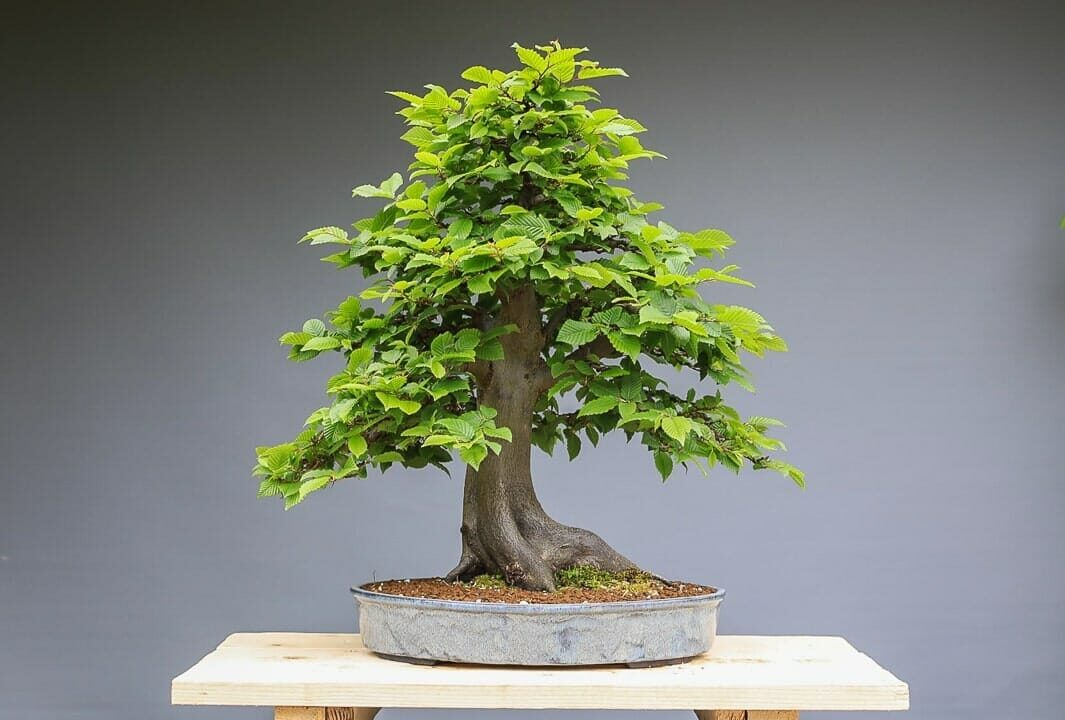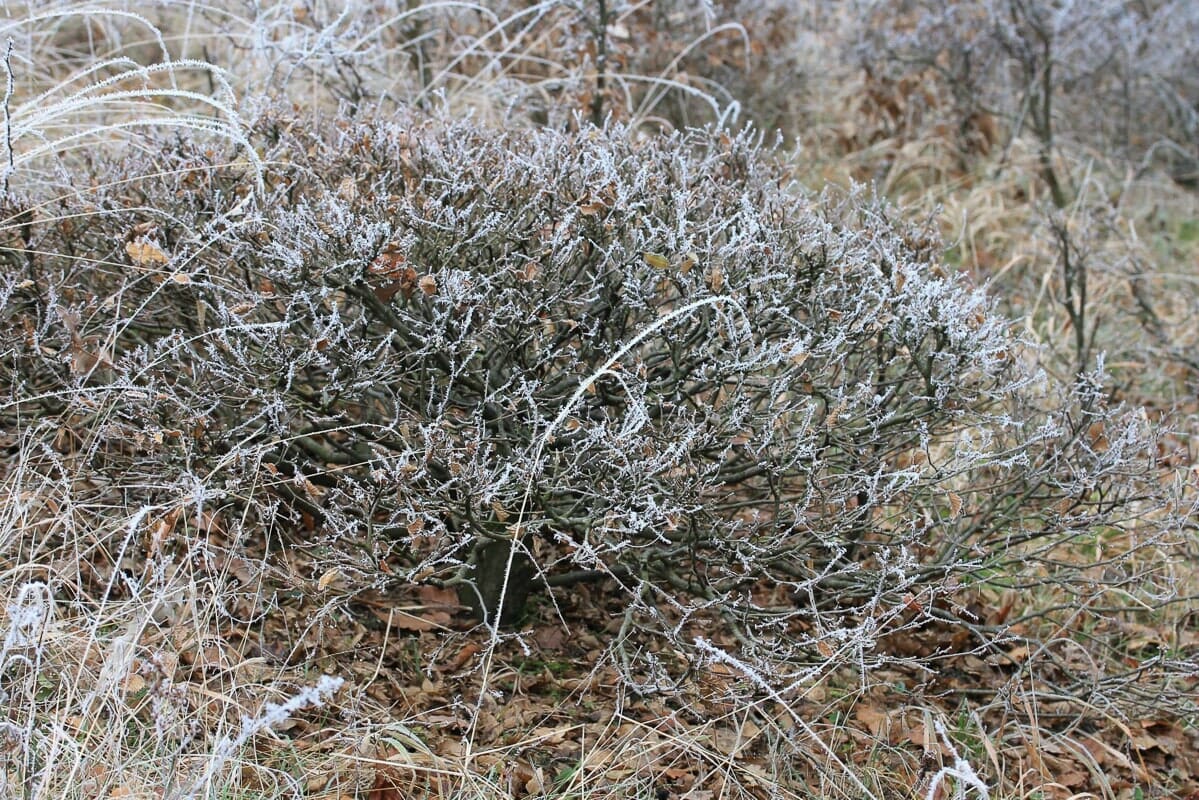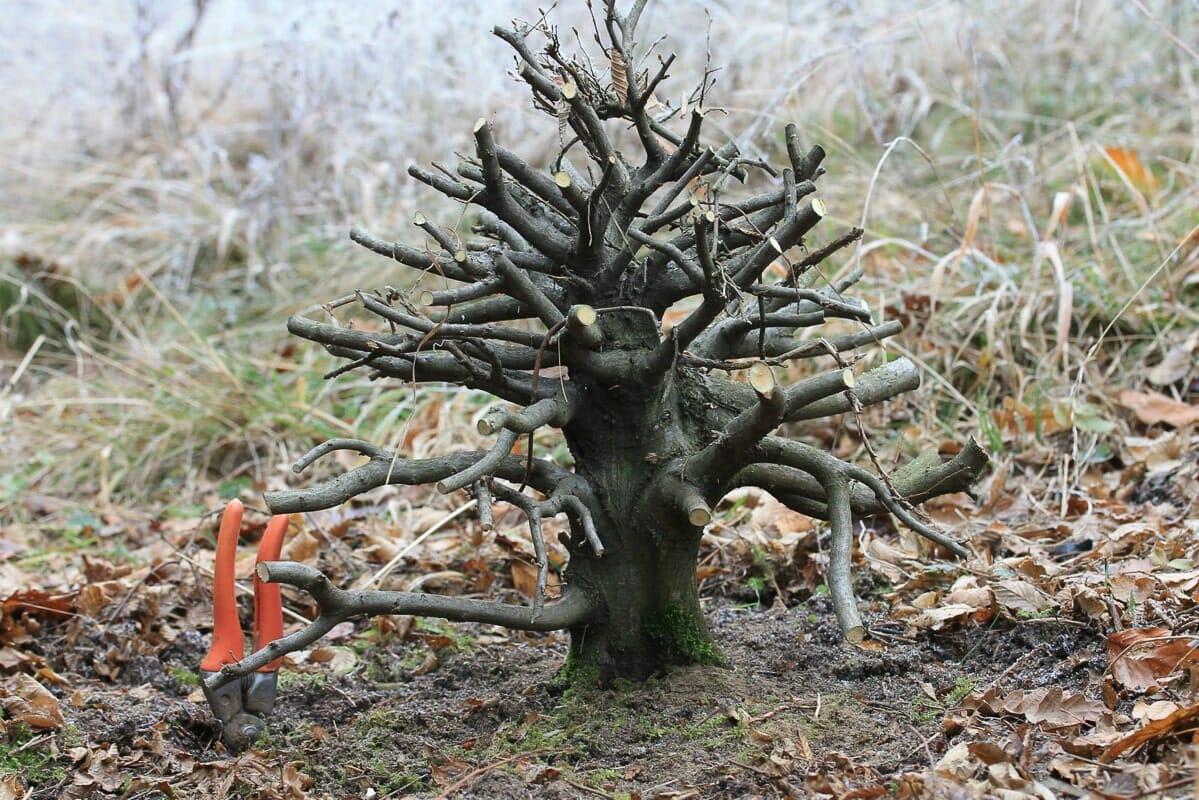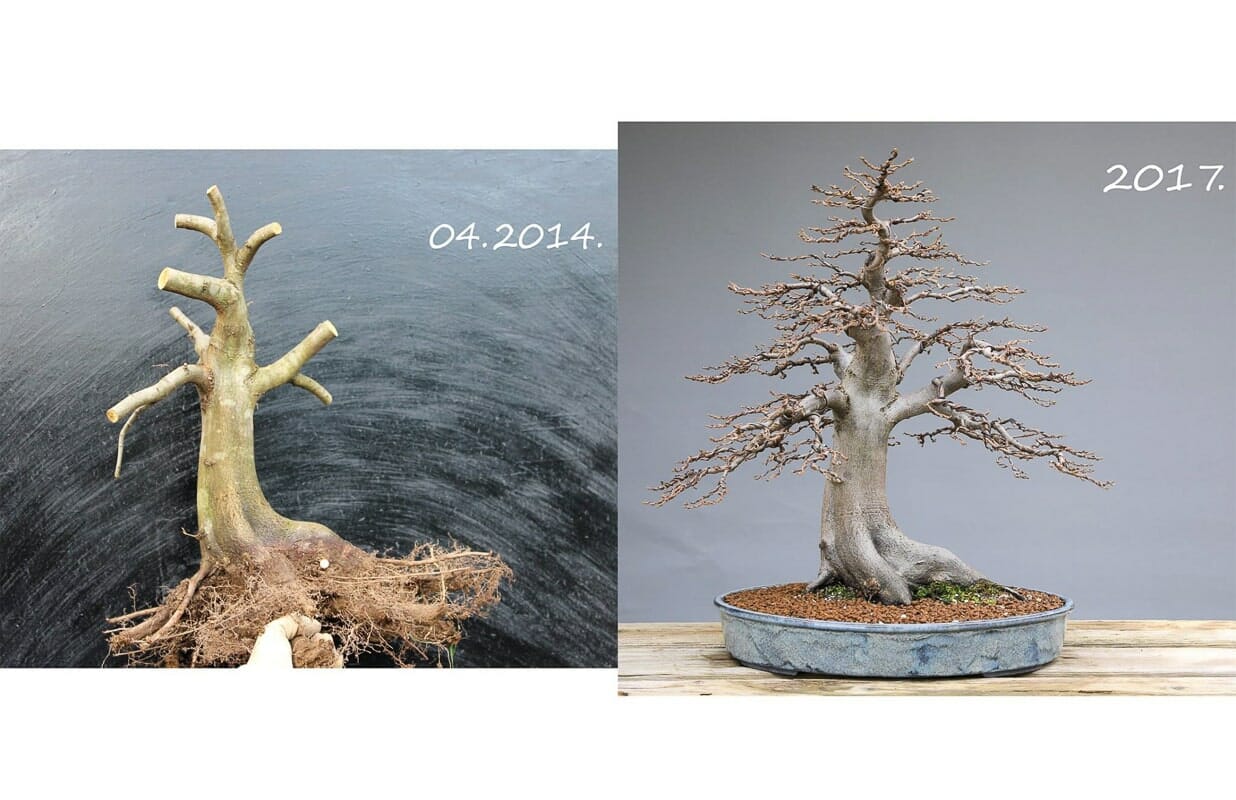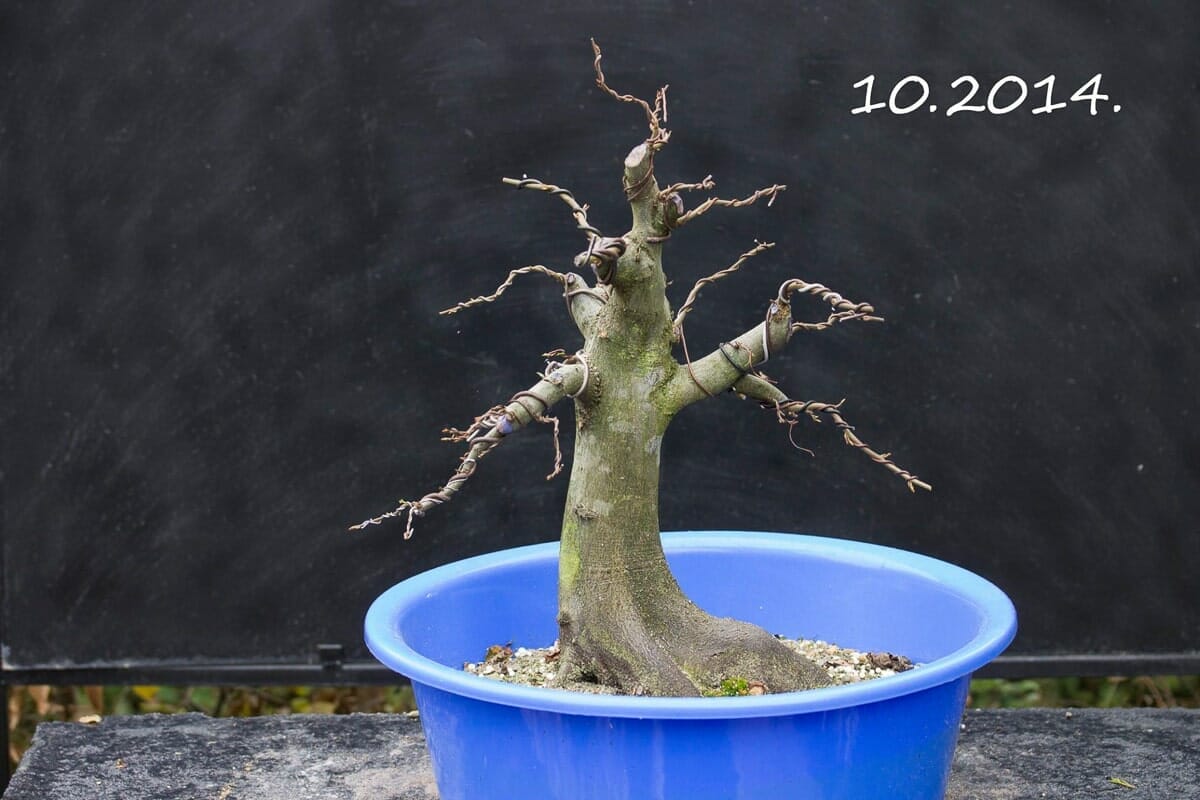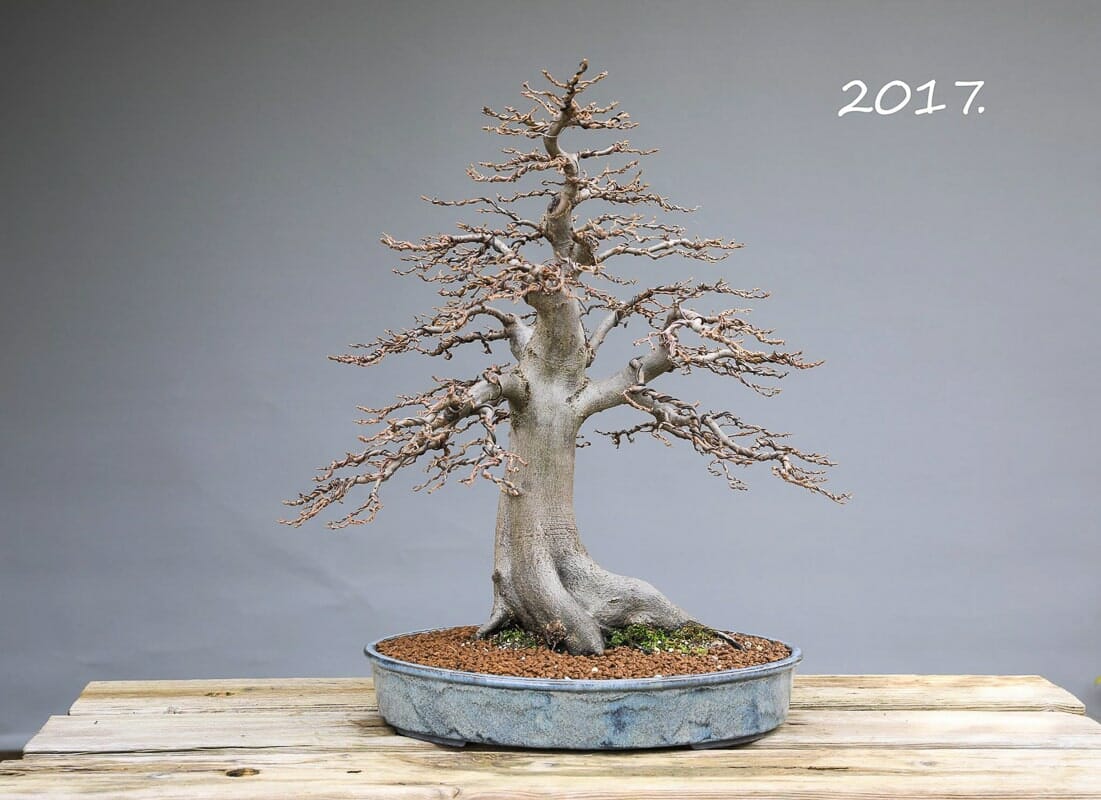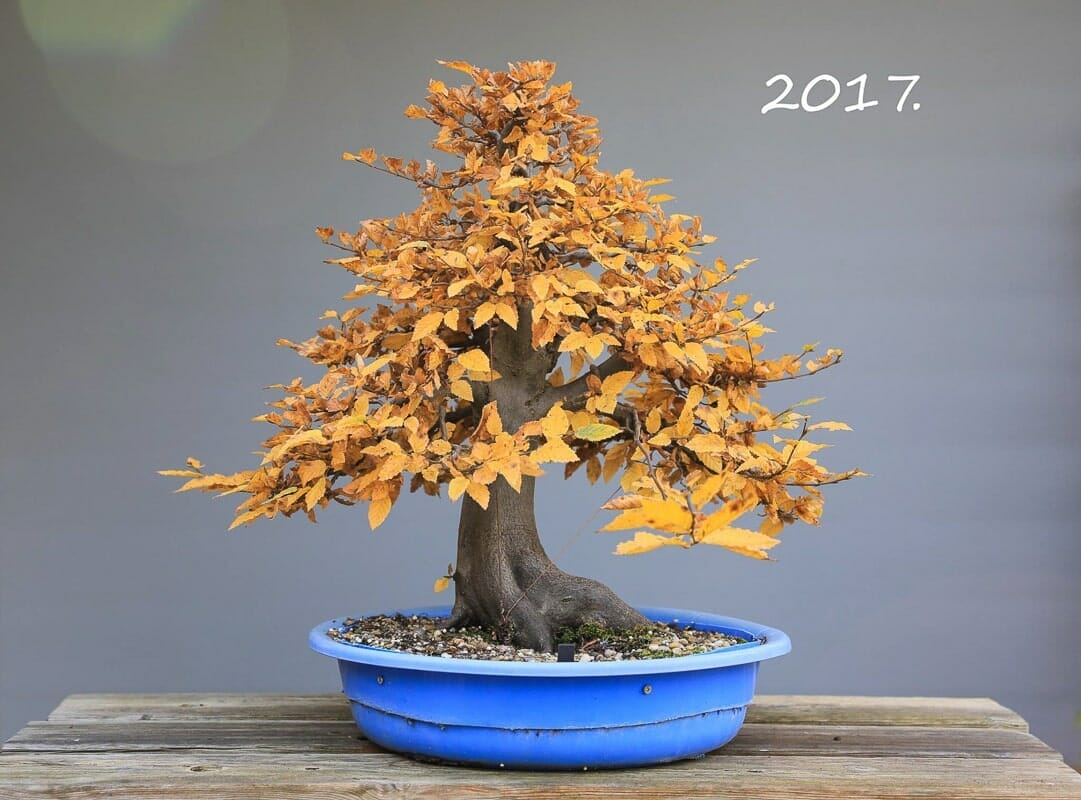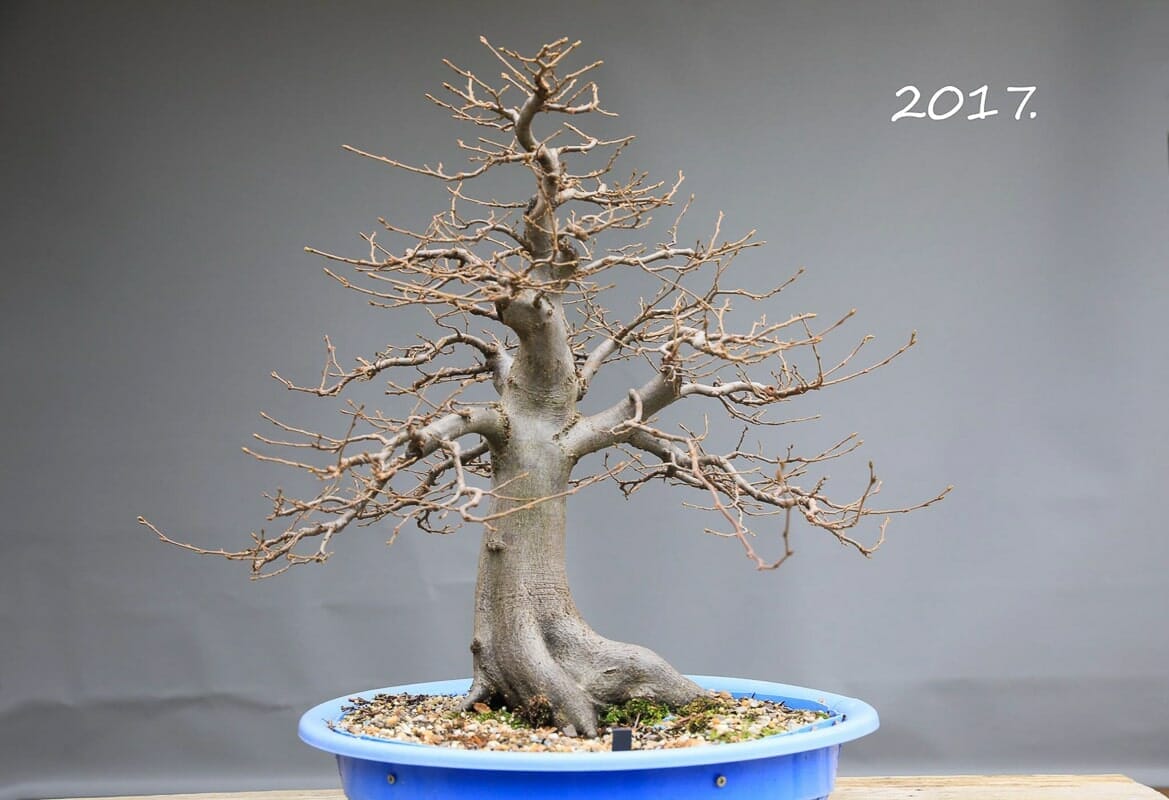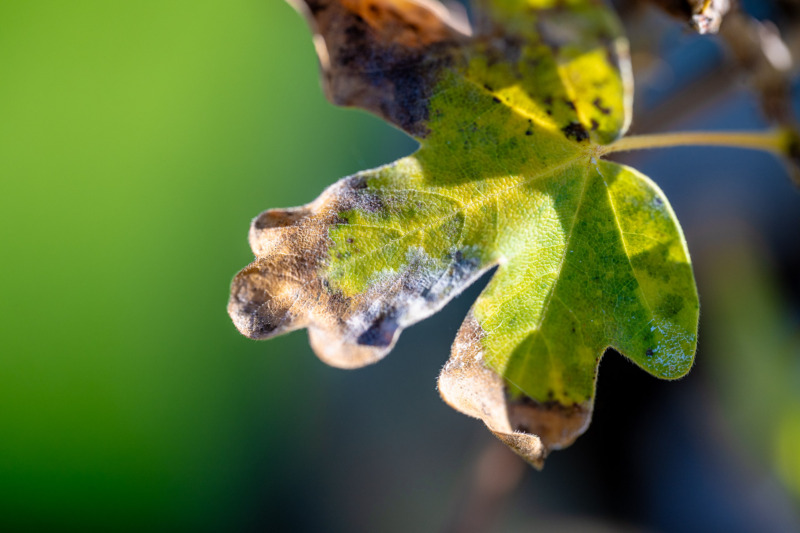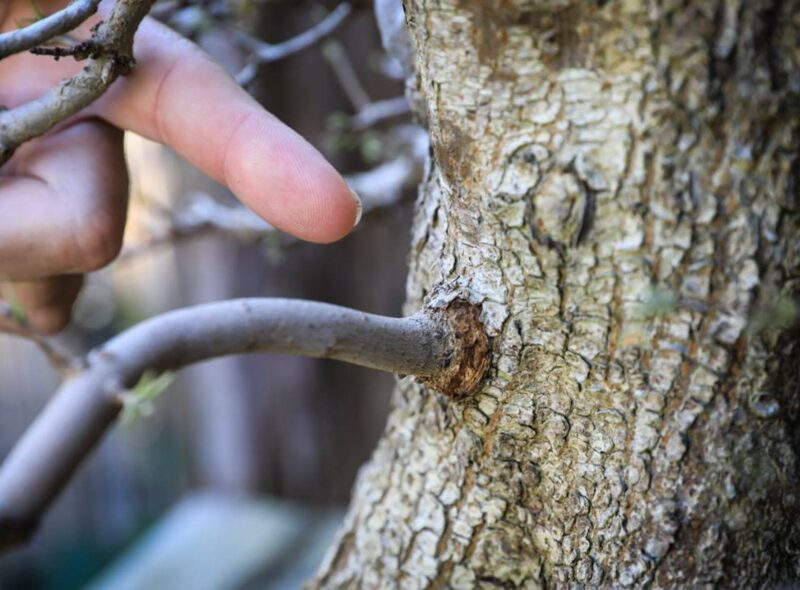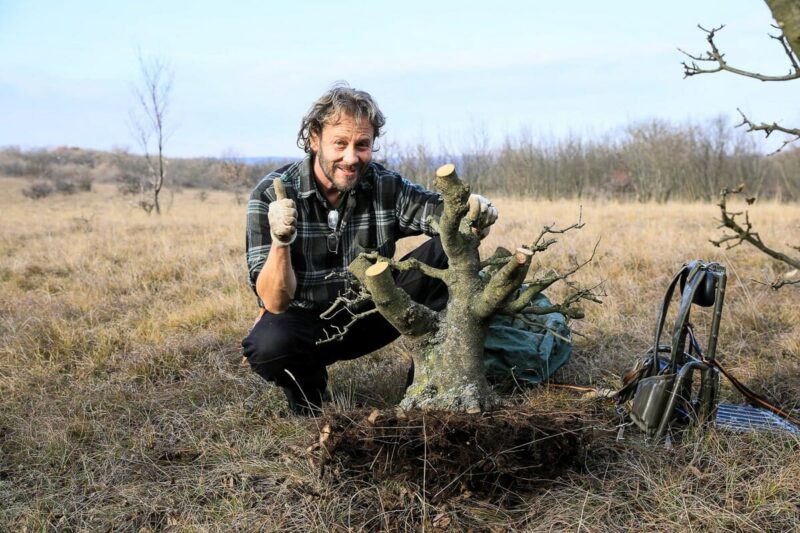The hornbeam is particularly suitable for use in combination with a bonsai. It is extremely robust and regenerates quickly after generous pruning and wiring. It has short internodes, staggered buds and is very resistant to diseases. Various soil compositions are suitable for the hornbeam, but it particularly likes loamy and wet soil. In summer, it should preferably be planted in partial shade. Full sunlight can damage the hornbeam, as the tree's thin bark can otherwise burn off. If you are looking for the ideal hornbeam, you will quickly find it near the edge of the forest and in meadows. Here we have found a hornbeam (Yamadori) right at the edge of the forest and have already pruned it back severely on site In the following, we show you how to grow a Yamadori hornbeam step by step.

